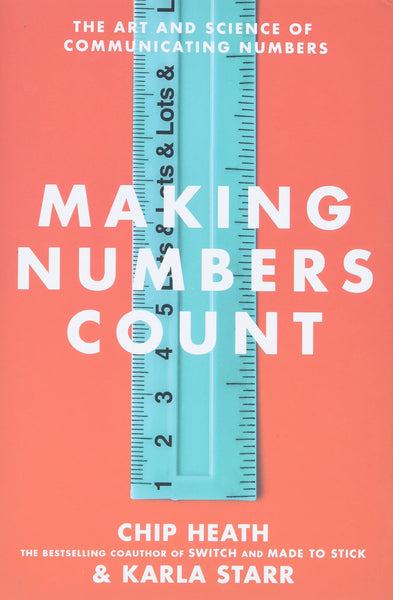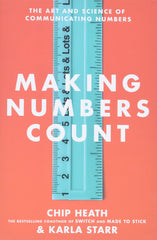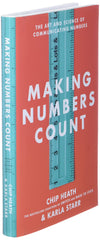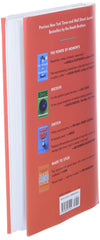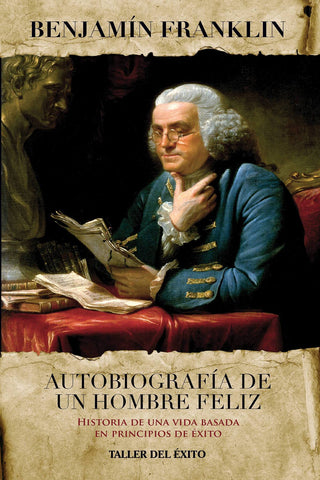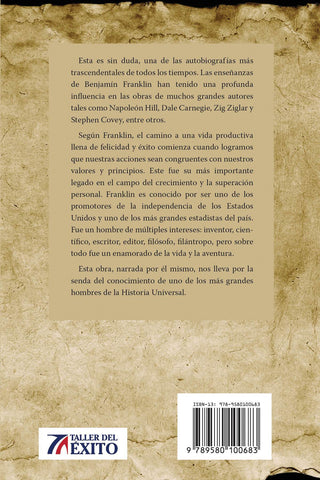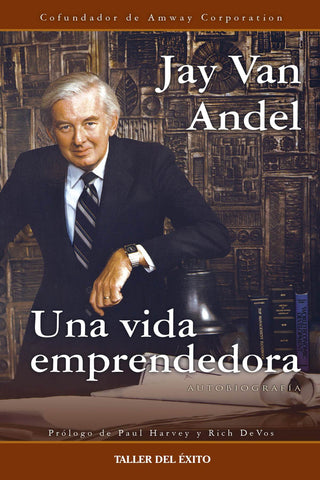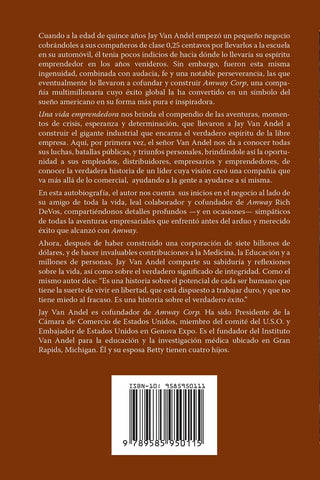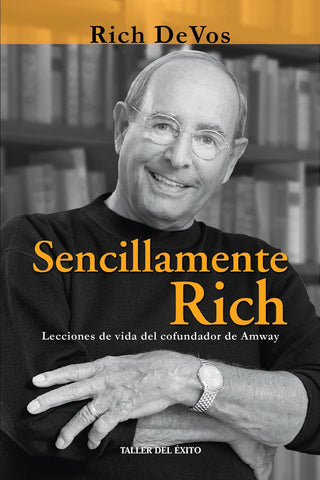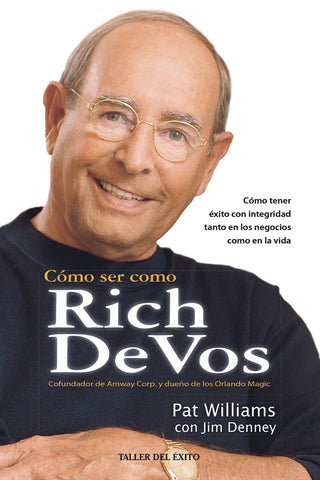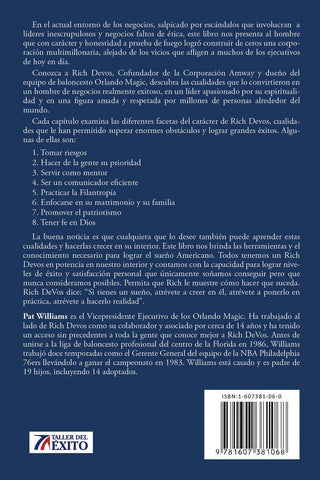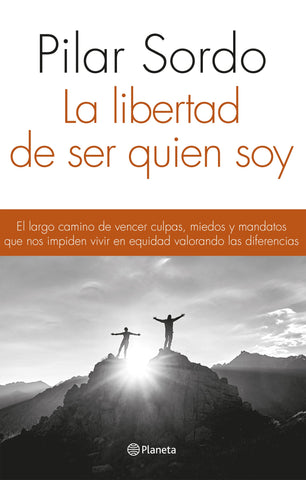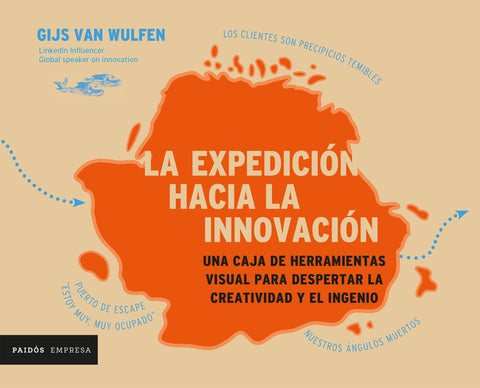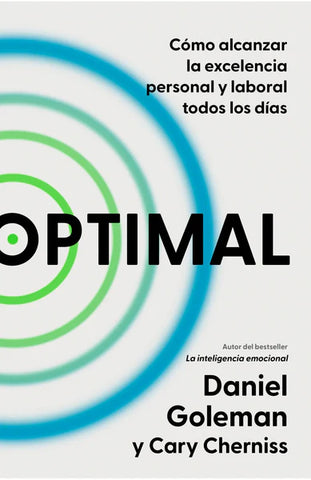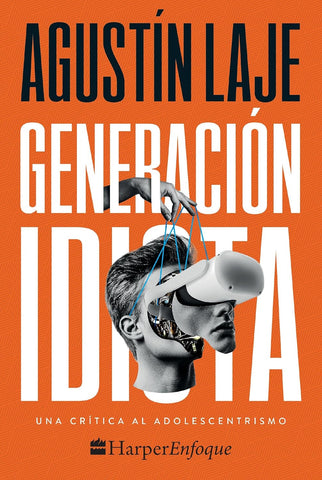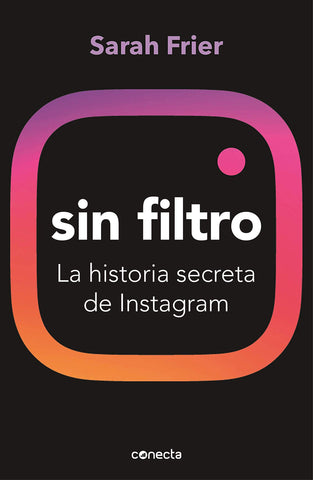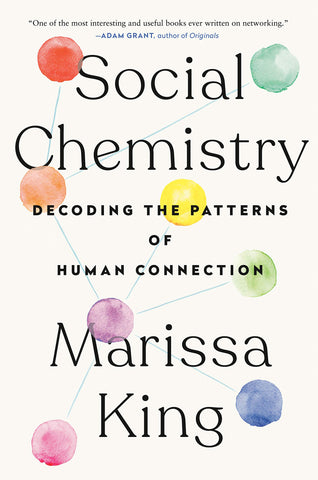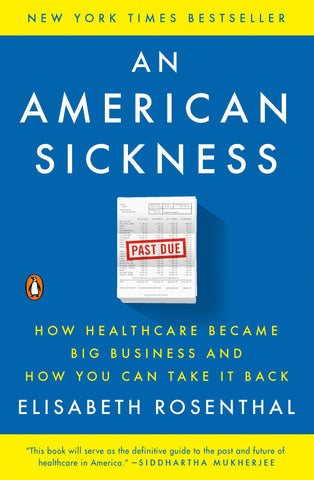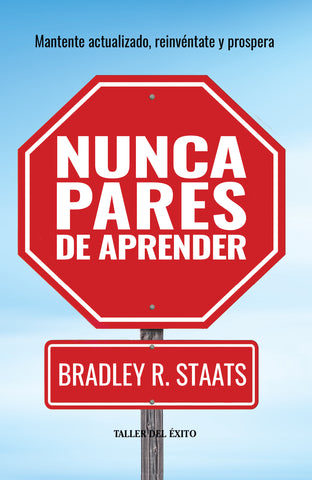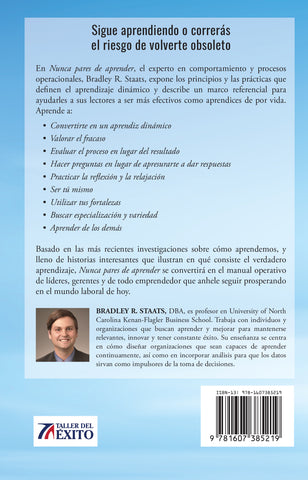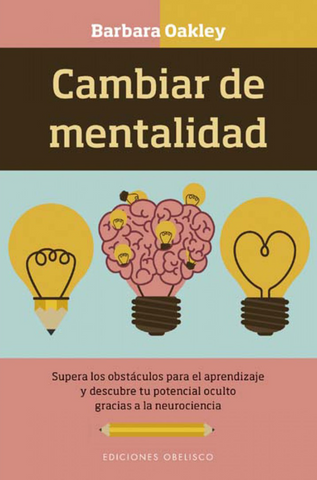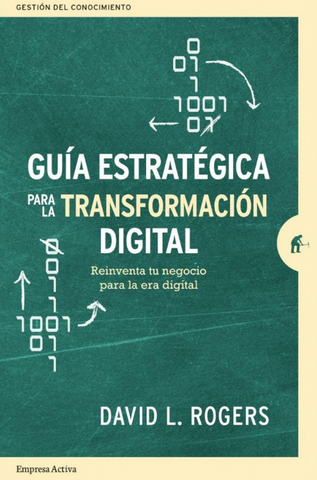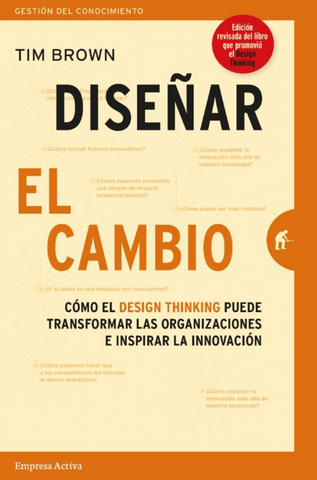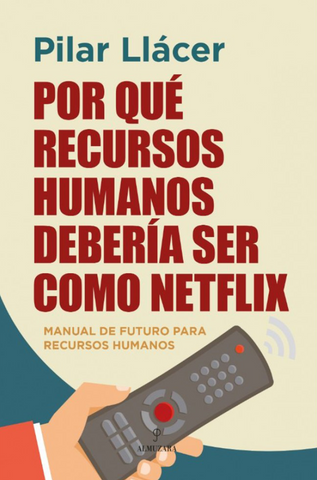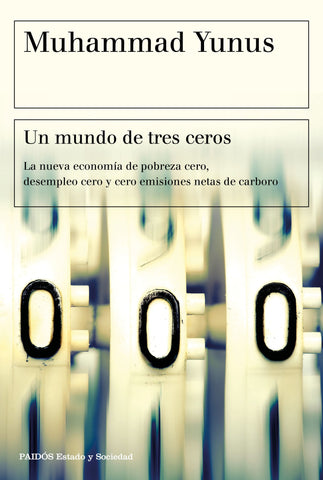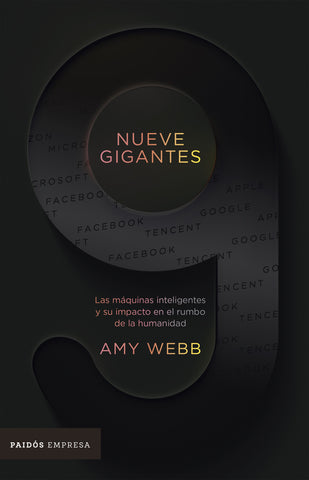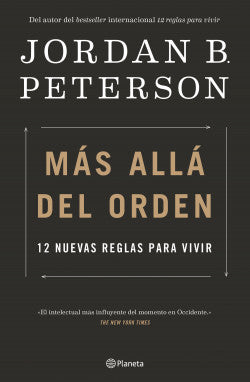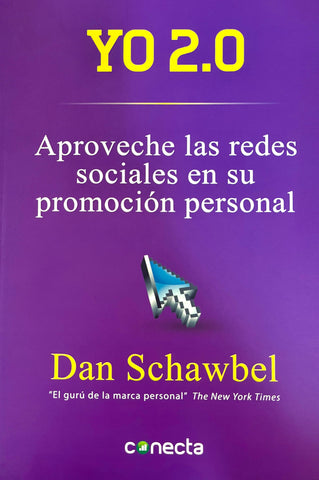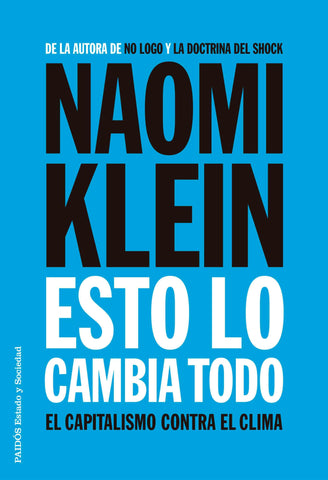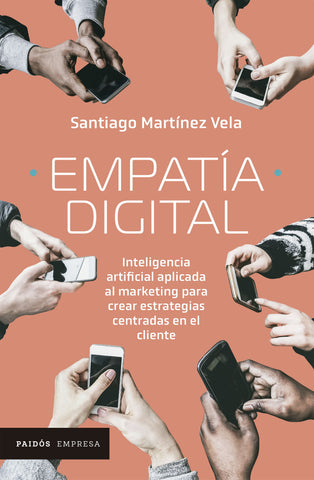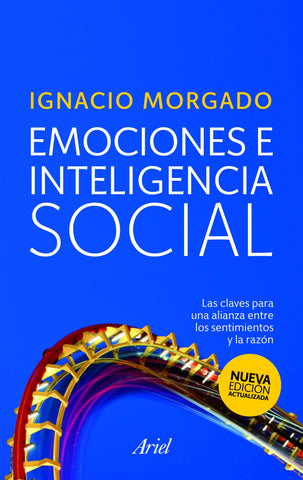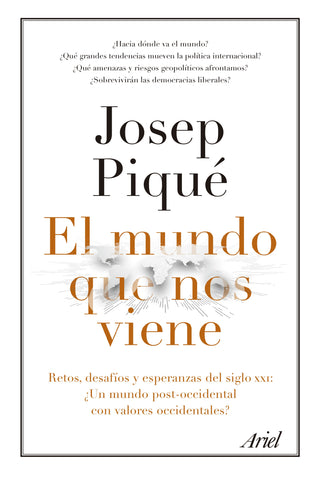Making Numbers Count
The Art and Science of Communicating Numbers
A clear, practical, first-of-its-kind guide to communicating and understanding numbers and data—from bestselling business author Chip Heath.
How much bigger is a billion than a million?
Well, a million seconds is twelve days. A billion seconds is…thirty-two years.
Understanding numbers is essential—but humans aren’t built to understand them. Until very recently, most languages had no words for numbers greater than five—anything from six to infinity was known as “lots.” While the numbers in our world have gotten increasingly complex, our brains are stuck in the past. How can we translate millions and billions and milliseconds and nanometers into things we can comprehend and use?
Author Chip Heath has excelled at teaching others about making ideas stick and here, in Making Numbers Count, he outlines specific principles that reveal how to translate a number into our brain’s language. This book is filled with examples of extreme number makeovers, vivid before-and-after examples that take a dry number and present it in a way that people click in and say “Wow, now I get it!”
You will learn principles such as:
-SIMPLE PERSPECTIVE CUES: researchers at Microsoft found that adding one simple comparison sentence doubled how accurately users estimated statistics like population and area of countries.
-VIVIDNESS: get perspective on the size of a nucleus by imagining a bee in a cathedral, or a pea in a racetrack, which are easier to envision than “1/100,000th of the size of an atom.”
-CONVERT TO A PROCESS: capitalize on our intuitive sense of time (5 gigabytes of music storage turns into “2 months of commutes, without repeating a song”).
-EMOTIONAL MEASURING STICKS: frame the number in a way that people already care about (“that medical protocol would save twice as many women as curing breast cancer”).
Whether you’re interested in global problems like climate change, running a tech firm or a farm, or just explaining how many Cokes you’d have to drink if you burned calories like a hummingbird, this book will help math-lovers and math-haters alike translate the numbers that animate our world—allowing us to bring more data, more naturally, into decisions in our schools, our workplaces, and our society.

Chip Heath is a professor at Stanford Graduate School of Business, teaching courses on business strategy and organizations. He is the co-author (along with his brother, Dan) of three books. Their latest book, Decisive: How to Make Better Decisions in Life and Work was published in spring of 2013 and debuted at #1 on the Wall Street Journal bestseller list and #2 on the New York Times. Their 2010 book, Switch: How to Change Things When Change is Hard, hit #1 on both bestseller lists. Their first book, Made to Stick: Why Some Ideas Survive and Others Die, spent two years on the Business Week bestseller list and was an Amazon Top 10 Business Book for both editors and readers. Their books have been translated into over 30 languages including Thai, Arabic, and Lithuanian. Chip has consulted with clients ranging from Google and Gap to The Nature Conservancy and the American Heart Association.
Karla Starr is an author & behavioral scientist helping companies translate their data into messages that resonate. Visit kstarr.com for details on how to help your organization communicate better. Her first book, Can You Learn to Be Lucky?, was a Fast Company best book of the year; she is also the coauthor of Making Numbers Count with Chip Heath.
A member of the National Association of Science Writers and the recipient of a Best Science/Health award from the Society of Professional Journalists, she has written for some of the world's leading publications.
Productos relacionados
-
Autobiografia de un Hombre Feliz$14.95 USDEsta es sin duda, una de las autobiografías más...Esta es sin duda, una de las autobiografías más trascendentales de todos los tiempos. Las enseñanzas de Benjamín Franklin han tenido una profunda influencia en las obras de muchos grandes autores t...
-
Una vida emprendedora$17.95 USDCuando a la edad de quince años Jay Van Andel e...Cuando a la edad de quince años Jay Van Andel empezó un pequeño negocio cobrándoles a sus compañeros de clase 0,25 centavos por llevarlos a la escuela en su automóvil, él tenía pocos indicios de ha...
-
Sencillamente rich$16.95 USDRich DeVos es un destacado empresario que empez...Rich DeVos es un destacado empresario que empezó su fortuna desde cero hasta convertirse en billonario. Hombre de familia y devoto cristiano, lántropo, conferencista internacional y autor de bestse...
-
Cómo ser como Rich Devos$15.95 USDEn una era de líderes de negocios inescrupuloso...En una era de líderes de negocios inescrupulosos y sin ética, Rich DeVos es un ejemplo claro de cómo alcanzar el éxito en la forma correcta. Rich DeVos, es el Cofundador de Amway Corp. y dueño del ...
-
La libertad de ser quien soy$11.95 USDDesde una perspectiva de género y tomando en ...Desde una perspectiva de género y tomando en cuenta el momento feminista actual se abre aquí la pregunta por nuestra identidad: ¿cómo llegamos a ser quienes realmente somos por sobre lo que hacem...
-
La expedición hacia la innovación$12.95 USDLa expedición hacia la innovación es para la ...La expedición hacia la innovación es para la innovación lo que ha sido el mega bestseller de Alexander Osterwalder para el modelo de negocios: hacer que un tema de negocios complicado sea muy acc...
-
Optimal$18.95 USDExisten momentos en los que alcanzamos el ren...Existen momentos en los que alcanzamos el rendimiento máximo: un atleta ejecuta un juego perfecto o una empresa logra un trimestre con beneficios extraordinarios. Pero estos momentos suelen ser e...
-
Generación idiota$17.95 USDGeneración idiota nos ofrece una inmersión pro...Generación idiota nos ofrece una inmersión profunda en la desaparición de la sociedad inter generacional y el auge de la mentalidad adolescente, que ha causado un gran daño a la política y a la so...
-
Sin filtro$21.95 USDInstagram ha cambiado la tecnología y los negoc...Instagram ha cambiado la tecnología y los negocios, la cultura y la comunicacióny también nos ha cambiado a todos nosotros.¡Descubre sus secretos!Instagram está tan ligado a nuestro día a día que s...
-
Social Chemistry$28.00 USDOne of 2021's Most Highly Anticipated New Books...One of 2021's Most Highly Anticipated New Books—Newsweek One of The 20 Leadership Books to Read in 2020—Adam GrantOne of The Best New Wellness Books Hitting Shelves in January 2021—Shape.com A Top ...
-
So You Want to Talk About Race$16.99 USDIn this #1 New York Times bestseller, Ijeoma Ol...In this #1 New York Times bestseller, Ijeoma Oluo offers a revelatory examination of race in America.Protests against racial injustice and white supremacy have galvanized millions around the world....
-
No Filter$18.00 USDWinner of the 2020 Financial Times and McKinsey...Winner of the 2020 Financial Times and McKinsey Business Book of the Year Award * Finalist for SABEW'S Inaugural Best in Business Book AwardIn this “sequel to The Social Network” (The New York Time...
-
An American Sickness$18.00 USDA New York Times bestseller/Washington Post Not...A New York Times bestseller/Washington Post Notable Book of 2017/NPR Best Books of 2017/Wall Street Journal Best Books of 2017 "This book will serve as the definitive guide to the past and future o...
-
Nunca pares de aprender$17.95 USDEn Nunca pares de aprender, el experto en comp...En Nunca pares de aprender, el experto en comportamiento y procesos operacionales, Bradley R. Staats, expone los principios y las prácticas que definen el aprendizaje dinámico y describe un marco ...
-
Cambiar de mentalidad$17.85 USDEn una época en la que se nos pide constantemen...En una época en la que se nos pide constantemente que nos reinventemos para adaptarnos a las nuevas tecnologías, Cambiar de mentalidad nos muestra cómo podemos descubrir talentos de los que no éram...
-
La apple de Tim Cook$21.95 USDCuando Steve Jobs murió en 2011, muchos temían ...Cuando Steve Jobs murió en 2011, muchos temían que fuera insustituible y que Apple descarrilara rápidamente. Mucha gente está esperando cualquier inconveniente que sufra la empresa para poder decir...
-
Guía estratégica para la transformación digital$19.95 USDmuestra cómo las empresas pueden revitalizar su...muestra cómo las empresas pueden revitalizar sus planes de juego y capturar nuevas oportunidades del mundo digital. Rogers muestra por qué las empresas tradicionales necesitan repensar sus suposici...
-
Diseñar el cambio$20.95 USDEl mito de la innovación es que las ideas brill...El mito de la innovación es que las ideas brillantes saltan completamente formadas de las mentes de los genios. La realidad es que la mayoría de las innovaciones provienen de un proceso de examen r...
-
Cómo monetizar las redes sociales$16.95 USD
$19.95Abrir las puertas a estrategias que no se conoc...Abrir las puertas a estrategias que no se conocen y con las que lograr El Dorado que ansía cualquier empresa: la monetización de sus redes sociales. Descubrir sus entresijos y las metodologías que ... -
Marketing digital para los que no saben de Marketing digital$17.80 USD
$20.95El entorno digital está lleno de oportunidades ...El entorno digital está lleno de oportunidades y como padres, educadores o simples ciudadanos tenemos la responsabilidad de entender los códigos por los que se rige este apasionante mundo. Todos so... -
El poder de la diferencia$21.95 USDEste libro nos invita a abrazar la diversidad y...Este libro nos invita a abrazar la diversidad y la interculturalidad, no solo como estrategia y forma de trabajo, sino también como forma de vida. En él, la autora explica cómo gestionar la diversa...
-
Por qué Recursos Humanos debería ser como Netflix$19.75 USDDe quién te fías más, ¿de tu jefe o de Google? ...De quién te fías más, ¿de tu jefe o de Google? ¿Se necesita el control horario para todos los puestos? ¿Requieren todos los trabajadores el mismo número de días de vacaciones y de trabajo? ¿Para qu...
-
La escuela en la nube$16.95 USDSugata Mitra, una de las figuras más relevant...Sugata Mitra, una de las figuras más relevantes a nivel internacional dedicada a la innovación del aprendizaje, nos presenta las investigaciones que le llevaron a proponer un nuevo modelo educati...
-
Un mundo de tres ceros$14.95 USDEl Premio Nobel de la Paz y autor de El banqu...El Premio Nobel de la Paz y autor de El banquero de los pobres, nos ofrece su visión de un nuevo sistema económico emergente que puede salvar la humanidad y el planeta. Muhammad Yunus es uno de ...
-
Nueve gigantes$18.95 USD"Amy Webb muestra en sus libros con claridad,..."Amy Webb muestra en sus libros con claridad, perspicacia y una gran dosis de pragmatismo cómo afrontar la siguiente gran disrupción y las acciones que necesitamos antes de que nos golpee". Ram C...
-
Más allá del orden$16.95 USDEl autor más influyente y polémico del momento...El autor más influyente y polémico del momento. Su libro más esperado. Tras 12 reglas para vivir, llega su esperada continuación, la obra que nos da el perfecto equilibrio entre orden y caos. En ...
-
Yo 2.0$19.99 USDYo 2.0 le ofrece todo lo que usted necesita sa...Yo 2.0 le ofrece todo lo que usted necesita saber para aprovechar el potencial de los medios y redes sociales, y ponerlos al servicio de su promoción personal y profesional. Los nuevos medios soci...
-
Esto lo cambia todo$16.95 USDNaomi Klein es una de las voces críticas más ...Naomi Klein es una de las voces críticas más representativas a nivel internacional del movimiento antiglobalización y de los movimientos sociales. Esto cambia todo… es una brillante explicación ...
-
Empatía digital$13.95 USDUn libro para quienes inician en temas como i...Un libro para quienes inician en temas como inteligencia artificial y marketing digital. Conocer y descifrar al cliente es uno de los desafíos clásicos del marketing. No obstante, las tecnología...
-
Emociones e inteligencia social$9.95 USDLas emociones y los sentimientos constituyen ...Las emociones y los sentimientos constituyen una parte esencial de la vida. Este libro explica con brillantez qué son, cómo aparecieron y cómo se generan, así como porqué tienen tanta fuerza y so...
-
El pequeño libro para salvaguardar tu dinero$12.95 USDConsejos y herramientas para triunfar en los ...Consejos y herramientas para triunfar en los turbulentos mercados actuales En El pequeño libro para salvaguardar tu dinero, Jason Zweig, uno de los comentaristas financieros más influyentes de l...
-
El mundo que nos viene$9.95 USDHacia un nuevo equilibrio global: la pujanza ...Hacia un nuevo equilibrio global: la pujanza asiática y los valores occidentales Son muchos los análisis que hablan del inevitable relevo de Estados Unidos por China en el concierto global de la...
-
Neuroratoria$11.00 USD
$12.95Del autor del bestseller Véndele a la mente, ...Del autor del bestseller Véndele a la mente, no a la gente. En los últimos cuatro años, el conocimiento neurocientífico aplicado al mundo de los negocios ha avanzado más que en los anteriores tr...

